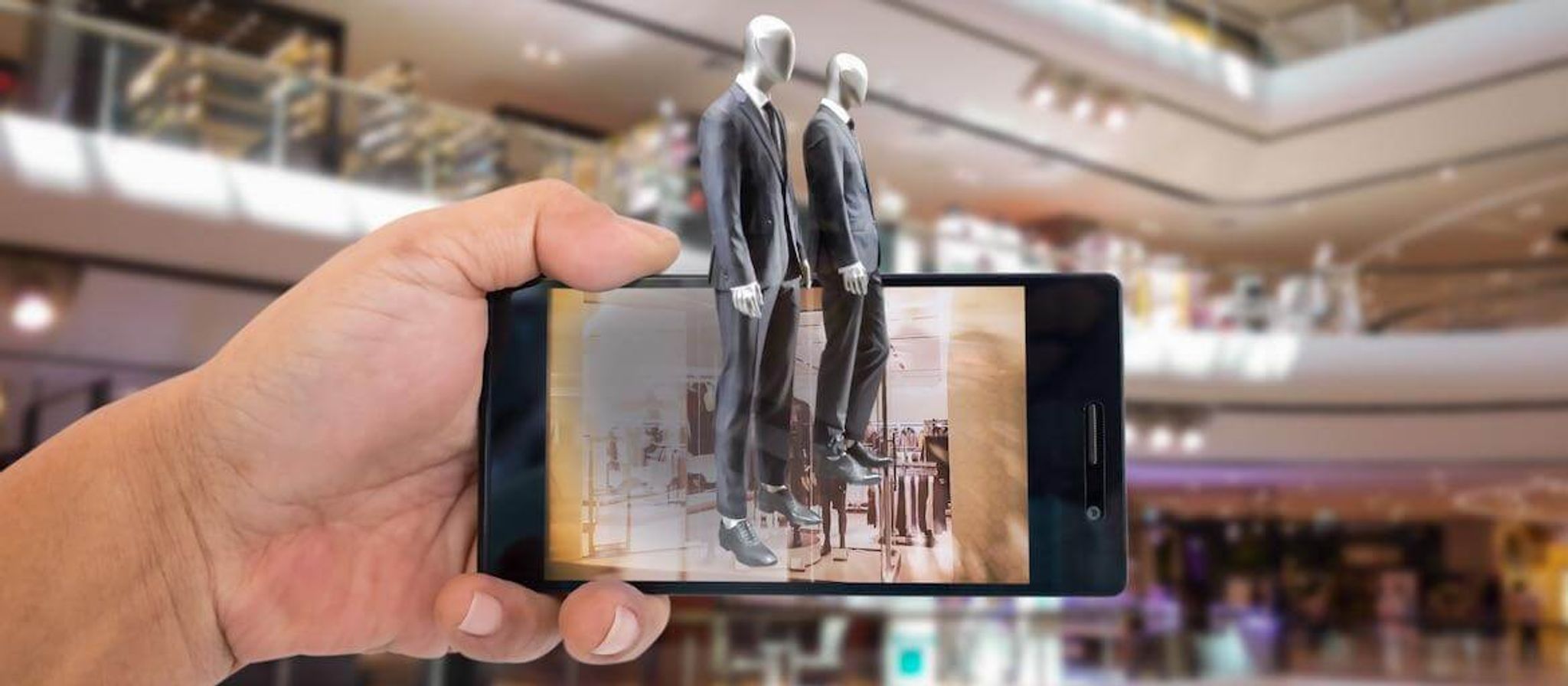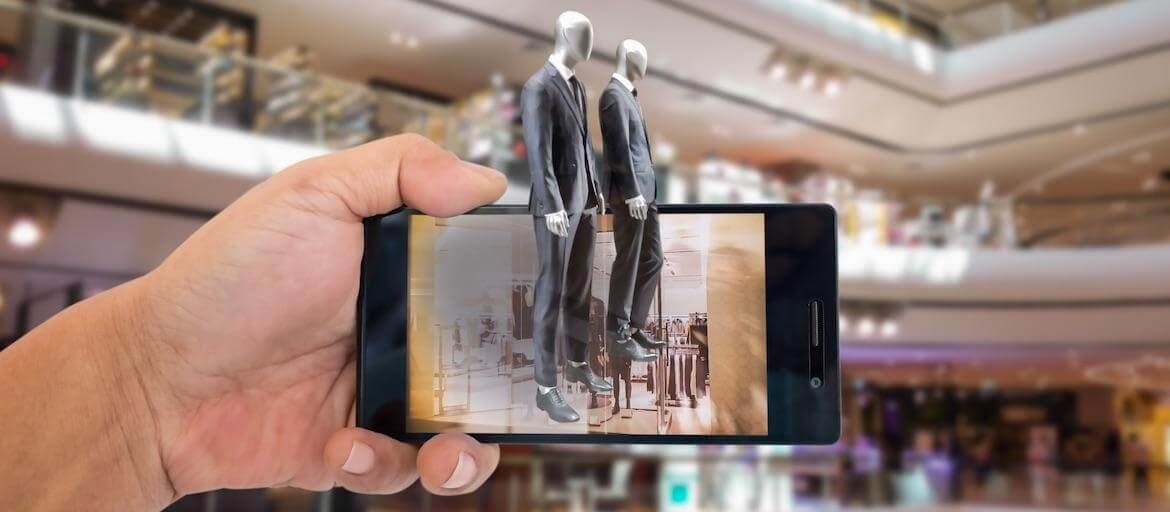Digital Technologies That Will Transform the Customer Experience in the Future


Nowadays, millennials who grew up with smartphones in their hands are the economic force of our time. As a result, digital technologies are stepping in to take over customer service.
In this article, I will be sharing information about the latest digital technologies such as VR, AR, Voice search, and Image search and their impact on customer experience along with vivid examples of each.
First, let's talk about the customer experience and why it is so important for businesses. Are some transformations needed here?
Digital Technologies & Customer Experience
Customer experience (CX) is not the same as user experience (UX). CX is a broader notion. It represents every step of the journey from when users compare prices to when they try the product, including when they resort to customer service if their needs aren’t met.
The influence of the customer experience should not be underestimated when it comes to a company’s success.
Harvard Business Review writes that organizations that can skillfully manage the entire experience reap enormous rewards. Among them are enhanced customer satisfaction, reduced churn, increased revenue, and greater employee satisfaction.
With the tough competition, customer experience changes tremendously. Only ten years ago customers were happy to see smiling and pleasant sales people and were open and satisfied with being sweet talked.
They were ready to buy products if polite people presented different products. Now, these types of tricks do not work anymore because almost everyone knows that it’s a trick.
When internet banners appeared many companies started to use them as their primary source of marketing, but nowadays people have banner blindness. 54% of users don’t click on banner ads because they do not trust them, and a whopping 33% of internet users find them utterly intolerable.
The customer’s attention is hard to catch. A study from Microsoft Corp showed that the average person’s attention span has dropped from 12 seconds to 8 seconds. As a result, our attention span is now shorter than that of a goldfish.
New technologies help to attract people to products and build a great experience.
While competitors make vivid product presentations using Virtual and Augmented reality, a company may remain disconnected and lose clients.
Virtual Reality
According to the definition:
Virtual Reality (VR) – is a digital technology that uses Virtual reality headsets, sometimes in combination with physical spaces or multi-projected environments, to generate realistic images, sounds and other sensations that simulate a user's physical presence in a virtual or imaginary environment.
VR is changing the customer experience in such fields as retail, education, healthcare, and others.
The Chinese retail store Alibaba launched a VR-campaign where customers, with the help of headsets, can visit shopping centers in different countries and buy products they need.
Companies in the automobile industry such as Jaguar, Volvo, Audi, and others launched virtual showrooms. Viewers can enjoy different destinations from inside and outside of a new automobile with the help of headsets.
With VR headsets customers can choose the location inside and outside of the car, look around, and perform limited test drives. This technology reduces physical space at stores, travel expenses, and logistics costs while differentiating the customer experience.
VR technologies are also applied in real estate. Customers do not have to drive to another city to find the right estate. Photos within ads usually don’t provide enough information about the property. The technology gives a prospective buyer a “feel” for the property by providing customers with a 3-D picture of the estate or even a virtual tour.
The application of Virtual reality in healthcare has therapeutic value. It may transport clients to a calm beach or silent forest to rest and meditate, or they may enjoy some virtual activities such as swimming, for example, while waiting for treatment.
As seen above, Virtual reality can open new horizons for customers. It lets them undergo a unique experience which was unlikely some years ago.
According to Statista.com, the total number of active Virtual reality users will reach 171 million by 2018.
VR provides an opportunity to drive luxurious cars or chose new real estate from home. It also improves job fields such as healthcare and education.
Augmented Reality
Augmented reality (AR) is a technology that adds different computer-generated elements such as sound, video, graphics or GPS data to a real-world environment.
AR technology became familiar to many people thanks to the Pokémon Go mobile app. However, since that time, it has found other uses outside of games.
Let’s have a look at how Augmented reality influences the customer experience.
Pepsi provided an excellent example of the power of AR advertising when they installed digital HD screens on bus shelters to portray events such as a rampaging robot or a prowling tiger using AR technology.
Snapchat is an image messaging and multimedia mobile application that adds funny masks to people’s faces using Augmented reality. This app is very popular. It has 13,364,113 downloads in the Google Play market.
AR is also used in E-commerce. For example, Gap displays its “DressingRoom” app where people can “try on” clothes without ever entering a store.
The Augmented reality market is growing, and the global market for AR products will surge 80% to $165 billion by 2024, according to researcher Global Market Insights.
Research firm IDC predicts that 30% of consumer-facing companies in the Forbes Global 2000 will experiment with AR and VR as part of their marketing efforts in 2017.
Visual Search
The Visual search mechanism works by сomparing the pixels in an uploaded image to millions of other images to identify and return results that are similar. Facebook determines who’s in the photo by applying this technology in addition to Google’s image search.
Instead of typing in a query such as ‘black case’ which may return thousands of general results, users can upload an image to narrow it down to something specific.
Visual search is making it much easier for consumers to find exactly what they are looking for.
Here are some examples of how visual search is applied by some companies:
Amazon
Amazon introduced a visual recognition mobile app, integrated into the Samsung Galaxy S8, giving consumers the ability to snap a picture of something, search for it online, and then buy it if they want among Amazon's catalog of products.
Facebook’s face detection
You may have noticed a square box that appears on everyone's face that lets you tag a person in a picture. Facebook uses a facial recognition software called “DeepFace.” This software calculates a unique number (“template”) based on a person’s facial features such as the distance between the eyes, nose, and ears. DeepFace detects whether two faces in different photos are the same person with 97.25% accuracy, regardless of lighting conditions or angles.
Visual Search makes the life of a customer much easier. Now people can find something that they like with a single click, compare prices, and then buy it if they want.
Voice Search
Voice search is a technology that allows users to find what they need on the Internet by speaking on a mobile phone or computer.
Thrive Analytics showed that a compelling number of people are using digital personal assistants:
The report revealed that 56% of adults use Siri, Google Now or Cortana.
These numbers will only rise according to the technology development which will better interpret and understand user’s requests and commands.
The rising interest in voice search pushes brands and companies to take Voice search seriously as it might fit into their customer experience strategies.
Consumers now expect faster, more relevant, personalized, and frictionless experiences. Voice search, powered by machine learning, will play an integral part in how brands go about meeting these expectations.
Some brands are already succeeding in implementing voice search.
Domino's Pizza has launched an app that allows consumers to order pizza with voice command via Amazon's Alexa, removing the need to go through a menu and click to order their choice.
Thanks to this, the company is increasing the number of channels by which consumers can get what they want.
Conclusions
To win at customer experience is becoming harder. The latest technologies such as AR, VR, Visual search, and Voice search have an excellent opportunity to grasp the customer’s attention for a longer period of time and influence their decision towards purchasing a product.
- Using the latest technologies such as AR, VR, Voice search, and Visual search you provide new ways to connect with customers and offer unique, memorable interactions.
- The newest digital technologies are already here. VR can transport customers to wherever they want to go, or it can engage them in super realistic games.
- AR now helps people choose what to wear and find out which staff is the most suitable for their home using a single smartphone.
- Voice search lets us find things we need without searching by hand, and visual search allows us to find things we like by using a single picture.
- Many people are impatient and don’t want to type their query; they would rather ask Google to find everything for them.
- To provide customers with the best experience, a company should make the best of itself by using these growing technologies.
- Customers are more cautious than ever; they will turn away from brands that don’t align with their values and needs.